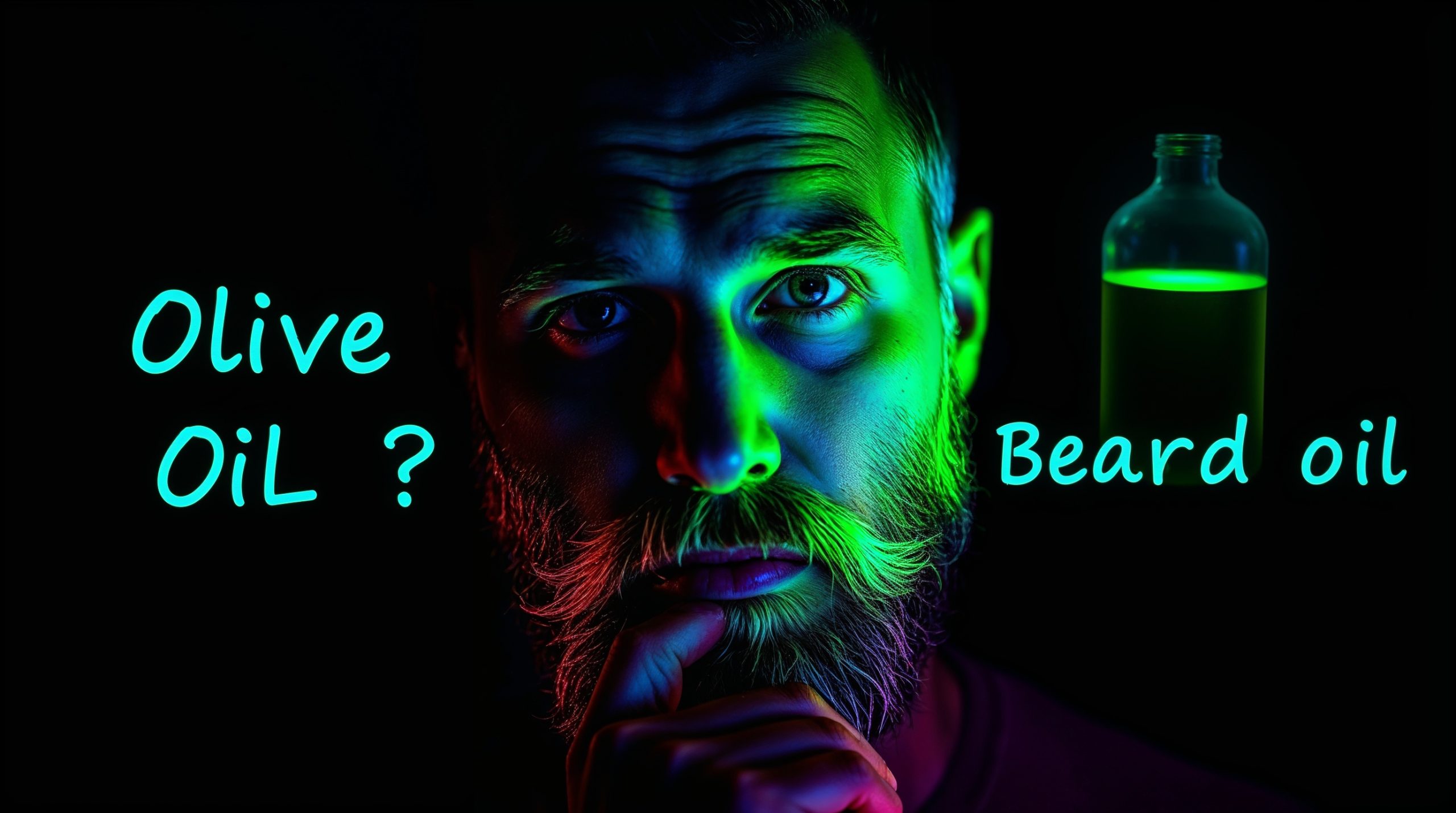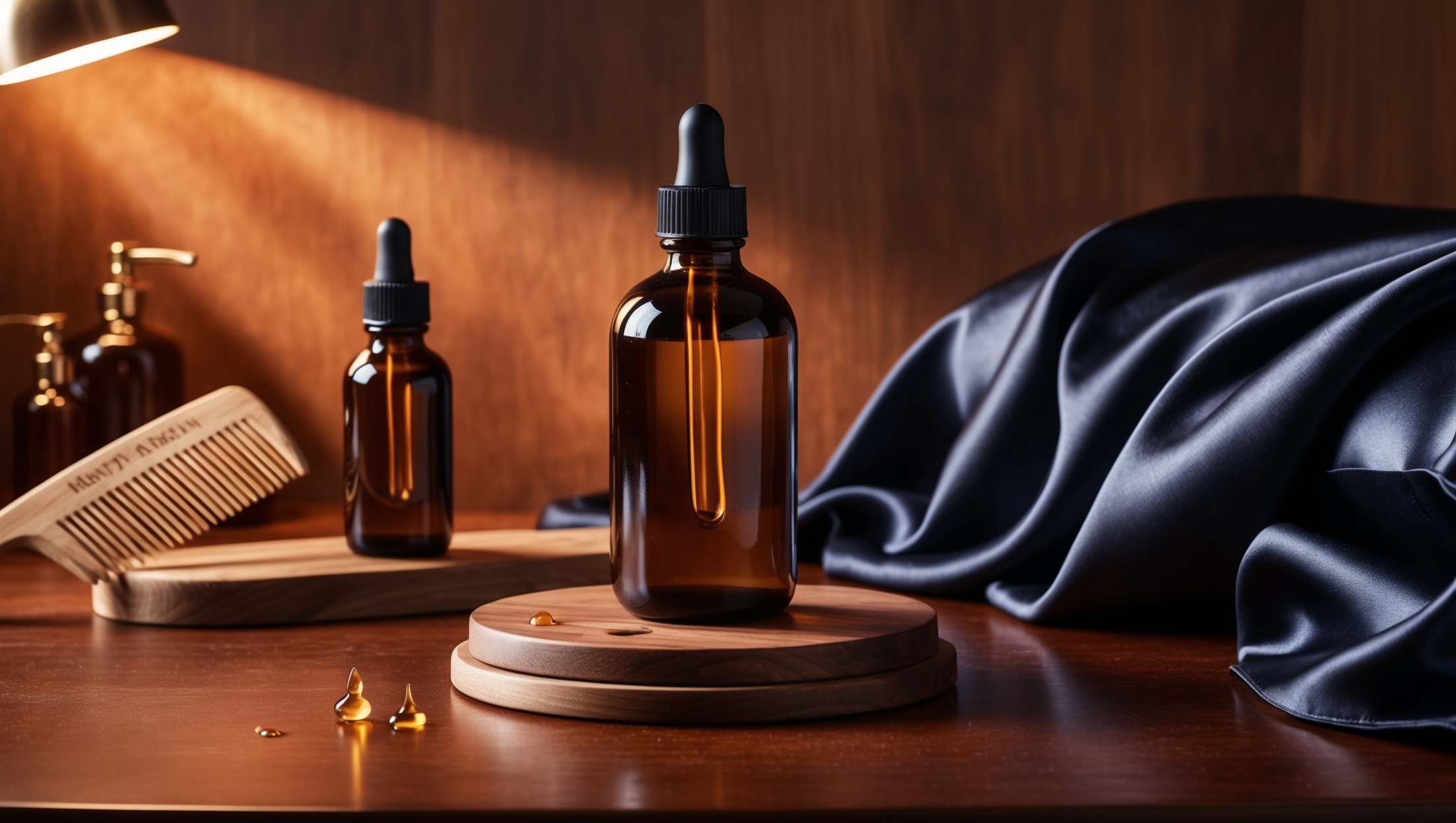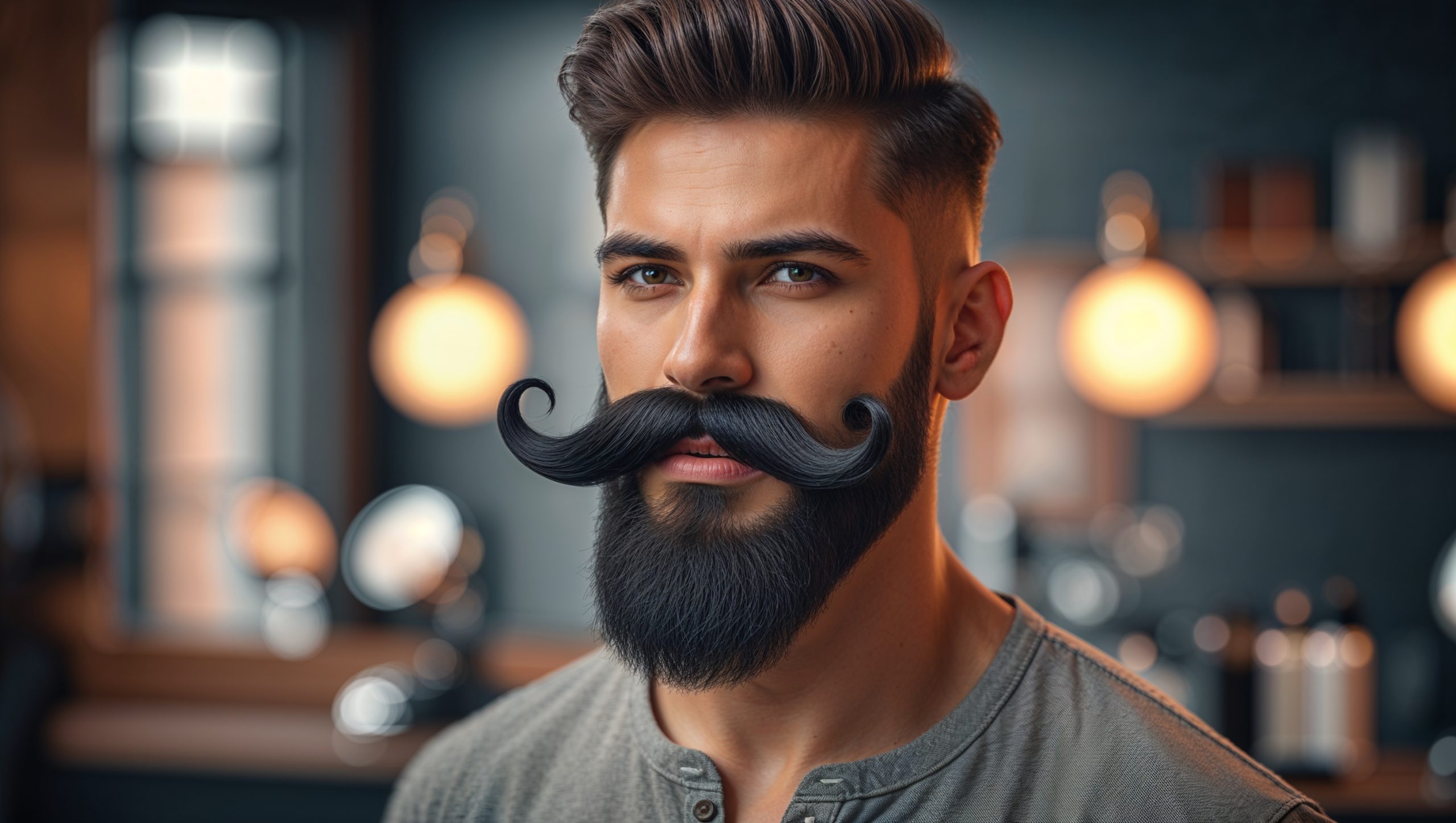- What’s Causing Those Follicular Ghost Towns?
- Turning Your Patchy Situation Around: The Rogue’s Playbook
- The Patience Principle: Give It Time, Brother
- Feed Your Face: Nutrition That Boosts Your Beard Game
- Supplemental Support: Beard Boosters in a Bottle
- The Minoxidil Method: The Science-Backed Solution
- The Beard Illusion: Strategic Styling for Patchiness
- Stimulate Those Slackers: Physical Methods
- When to Call in the Professionals
- Embrace What You’ve Got: Why Is My Beard Patchy? Sometimes It’s Just Meant To Be
- The Bottom Line: Your “Why Is My Beard Patchy” Battle Plan

So you’re asking yourself, “Why is my beard patchy?” You’ve been growing your facial hair for weeks now, and instead of channeling your inner Viking, you’re looking more like a patchy mess that screams “I just discovered puberty last Tuesday.” Don’t worry, bearded brother—you’re in good company. Even beard icons like Jason Momoa and Keanu Reeves battled the patch monster before achieving legendary status.
If you’re tired of looking like someone played connect-the-dots on your face and constantly wondering “why is my beard patchy?”, you’ve come to the right place. We’re diving face-first into the hairy mystery of the patchy beard and emerging with actionable solutions that’ll have you stroking a fuller mane before you know it.
What’s Causing Those Follicular Ghost Towns?
Did You Know?
The average man has between 10,000 to 20,000 hair follicles on his face, but genetics determine how many of those actually produce visible hair. Talk about follicular discrimination!

Genetics: Blaming Your Ancestors (Because You Can)
Let’s face it—sometimes the family tree doesn’t branch out in the direction of magnificent beards. If your dad and grandpa looked like they were sporting facial connect-the-dots rather than full beards, your DNA probably got the same memo.
Your genes determine:
- The number of hair follicles on your face
- How sensitive those follicles are to androgens (beard-growing hormones)
- The pattern of your facial hair growth
- The density and thickness of each individual hair
So if your paternal lineage looks like they couldn’t grow moss in a rain forest, you might be fighting an uphill battle. But don’t surrender your beard dreams just yet—genetics aren’t the whole story.
Hormonal Havoc: When Your Testosterone Isn’t Texting Back
Testosterone and its beefed-up cousin DHT (dihydrotestosterone) are the dynamic duo responsible for facial hair development. When these hormones bind to receptors in your facial hair follicles, they essentially say, “Grow, my pretties, grow!”
If your patchy beard looks like it’s being ghosted by these hormones, several factors could be at play:
- Poor conversion of testosterone to DHT
- Low sensitivity in your follicle receptors (they’re not picking up what your hormones are putting down)
- Stress, which can lower testosterone and disrupt hormone balance
The Vitamin Void: Nutritional No-Shows
💡 Pro Tip
A blood test from your doctor can identify specific nutritional deficiencies that might be stunting your beard growth. It’s like getting the cheat codes to your own facial hair game.
Your face isn’t growing a beard in a vacuum. It needs the right building materials, and if your diet is more drive-thru than nutrient-dense, your follicles are being asked to build a mansion with popsicle sticks.
The key nutrients your beard is desperately craving include:
- Biotin (Vitamin B7): The holy grail of hair growth
- Vitamin D: The sunshine vitamin that many dudes are seriously lacking
- Zinc: Critical for testosterone production and hair tissue growth
- Protein: The literal building blocks of hair
- Vitamins A, C, and E: The antioxidant trifecta that protects follicles

Grooming Gaffes: When Your Routine Is Roughing Up Your Face
Sometimes the problem isn’t growing hair—it’s how you’re treating what you’ve got. Poor grooming habits can make a decent beard look like it’s been through a lawn mower fight.
Common mistakes include:
- Washing with harsh soaps that strip natural oils
- Infrequent moisturizing (yes, your beard needs lotion too, bro)
- Aggressive brushing or combing
- Trimming without a plan (turning small patches into big ones)
- Ignoring the skin underneath (flaky skin = weak follicles)
Turning Your Patchy Situation Around: The Rogue’s Playbook
Now for the good stuff—how to transform your facial hair from “What happened here?” to “Damn, who’s that bearded badass?”
The Patience Principle: Give It Time, Brother
⚠️ Important Note
The 3-month rule: Most patchy beards need at least 90 days of consistent growth before you can truly judge their potential. Put down the razor and step away from the sink!
The number one mistake patchy-bearded men make is jumping ship too early. Rome wasn’t built in a day, and neither was Jason Momoa’s face mane.
When you first start growing, different areas grow at different rates. What looks like patches at week two might be filled in by month three. Longer hairs can also cover sparser areas—it’s nature’s combover, but way more dignified.
Feed Your Face: Nutrition That Boosts Your Beard Game
Your beard is literally made from what you eat. Here’s your grocery list for better beard growth:
- Eggs: Packed with protein, biotin, and beard-friendly minerals
- Fatty fish (salmon, mackerel): Loaded with omega-3s that keep hair healthy
- Nuts and seeds: Little powerhouses of zinc, selenium, and vitamin E
- Leafy greens: For the iron and vitamins your follicles crave
- Sweet potatoes: Beta-carotene promotes cell growth and beard health
- Berries: Antioxidants protect follicles from damage
- Plenty of water: Hydration is the foundation of hair health
Supplemental Support: Beard Boosters in a Bottle
What We Recommend
We’ve tested dozens of beard supplements, and consistently find that those containing biotin, collagen, MSM, and a vitamin B complex deliver the most noticeable results. Our top pick is https://Viking Revolution , which combines all these ingredients in the right doses without breaking the bank.

Get Ready For All The Compliments – Even the burliest of beards can be tamed with our high quality beard balm. Restore, mold and shape your beard. In order to have a great looking beard, you need the right products! Our Beard balm will give you the confidence to conquer the world, like a Viking
While food should be your foundation, supplements can give your facial forest the extra nutrients it needs:
- Biotin supplements: 5000mcg daily can support hair growth
- Multivitamins for men: Cover your nutritional bases
- Collagen peptides: Support hair structure and growth
- Vitamin D3: Especially important if you’re not outdoors much
The Minoxidil Method: The Science-Backed Solution
If you’re serious about filling in patches, minoxidil (the active ingredient in Rogaine) is the most scientifically supported topical treatment for beard growth. Here’s what you need to know:
- How it works: Increases blood flow to follicles and extends their growth phase
- Application: Typically applied twice daily to clean, dry skin
- Timeline: Expect 3-6 months for noticeable results
- Consistency: Must be used regularly—skipping days reduces effectiveness
- Side effects: Can include dry skin, initial shedding, or mild irritation
The Beard Illusion: Strategic Styling for Patchiness
Quick Styling Takeaways:
- Keep the length uniform throughout to hide patches
- Use a beard brush to train hairs to cover sparse areas
- Fade your cheek line to make patchiness less obvious
- Consider a shorter style that works with your growth pattern
- Beard dye can make lighter hairs more visible, creating the appearance of fullness
Sometimes the best approach is to work with what you’ve got. These styling tricks can make a patchy beard look surprisingly full:
The Right Length
Finding your beard’s “sweet spot” length can minimize the appearance of patches. Too short, and patches stand out; too long, and an uneven beard looks messy. Experiment with different lengths between 10mm and 20mm to find your optimal coverage.
Strategic Trimming
Instead of fighting your natural growth pattern, lean into it with styles that feature your stronger areas:
- The Van Dyke: Focus on the mustache and chin
- The Balbo: Disconnected mustache and chin beard (think Robert Downey Jr.)
- The Goatee: Classic for a reason—it works for guys with cheek patchiness
Beard Products That Create Fullness
The right products can work wonders for a patchy beard:
- Beard oils: Moisturize skin and make existing hair look healthier
- Beard balms with hold: Help direct hairs to cover sparse areas
- Beard fillers: Temporary cosmetic products that add the appearance of density
- Tinted beard gels: Add slight color to make lighter hairs more visible

Get Ready For All The Compliments – Even the burliest of beards can be tamed with our high quality beard balm. Restore, mold and shape your beard. In order to have a great looking beard, you need the right products! Our Beard balm will give you the confidence to conquer the world, like a Viking
Stimulate Those Slackers: Physical Methods
Sometimes your follicles need a physical wake-up call:
- Daily beard brushing: Stimulates circulation and distributes natural oils
- Derma rolling: Using a microneedle roller can increase blood flow and potentially stimulate growth (start with 0.5mm needle length once weekly)
- Facial exercises: Increasing blood flow to your face through exercises can support hair growth
- Cold showers: Might boost testosterone and improve circulation (plus they’re invigorating as hell)
When to Call in the Professionals
Did You Know?
Beard transplants have increased by over 600% in the last decade, with more men seeking permanent solutions for patchy growth. The procedure typically costs between $3,000-$7,000 depending on the area covered.
If you’ve given it the old college try and your beard still looks like it’s playing hard to get, professional help might be your next step:
- Consult a dermatologist: They can identify underlying conditions like alopecia areata or hormone imbalances
- Hormone testing: A doctor can check testosterone levels and recommend treatments if needed
- Beard transplants: The nuclear option—effective but pricey
- Prescription treatments: Some doctors prescribe medications that may help with hair growth

Embrace What You’ve Got: Why Is My Beard Patchy? Sometimes It’s Just Meant To Be
Here’s a beard truth bomb: confidence matters more than coverage. Some of the most iconic bearded looks aren’t perfectly full:
- Johnny Depp’s patchy-but-perfect facial hair has launched a thousand imitations
- Keanu Reeves rocks a beard that’s far from uniform
- James Franco makes patchy work like it was intentional all along
The most attractive thing about a beard isn’t its density—it’s how you wear it. Own your growth pattern, find a style that works with (not against) your natural pattern, and rock it with confidence.
The Bottom Line: Your “Why Is My Beard Patchy” Battle Plan
If you’re serious about transforming your patchy beard into something more substantial, here’s your action plan:
- Give it time: Commit to at least 3 months of growth
- Clean up your diet: Focus on beard-friendly nutrients
- Consider minoxidil: For the scientifically-backed approach
- Develop a proper care routine: Gentle cleansing, regular conditioning, careful grooming
- Find your style: Work with your growth pattern, not against it
- Supplement strategically: Add what your diet might be missing
- See a professional: If all else fails and you’re still determined
Remember, bearded brother, your facial hair journey is as unique as your fingerprint. Embrace the process, troubleshoot the patches, and know that The Bearded Rogue is here every step of the way.
Have you figured out why your beard was patchy and conquered those bare spots? Share your before and after pics with us on Instagram @TheBeardedRogue or drop your success story in the comments below!



